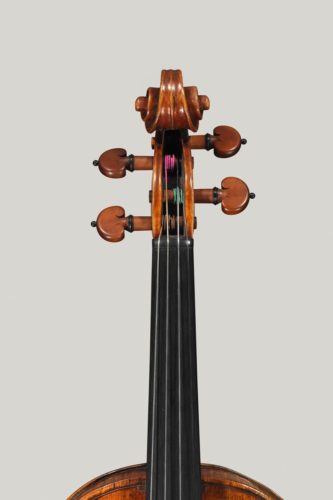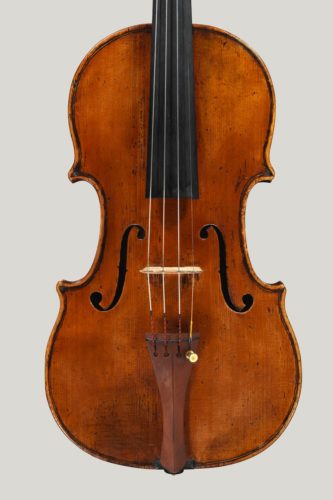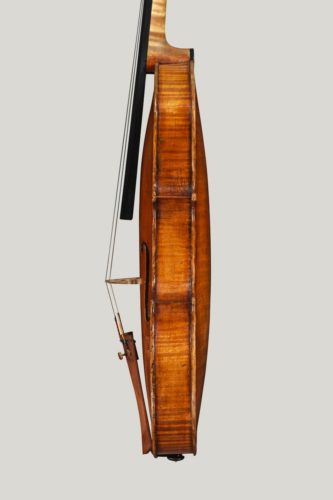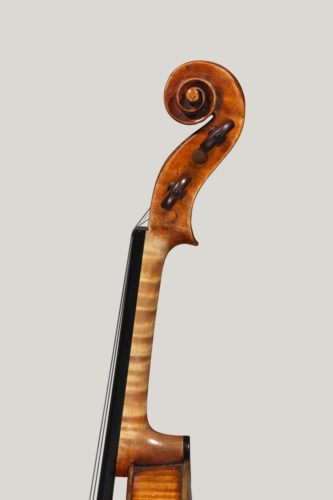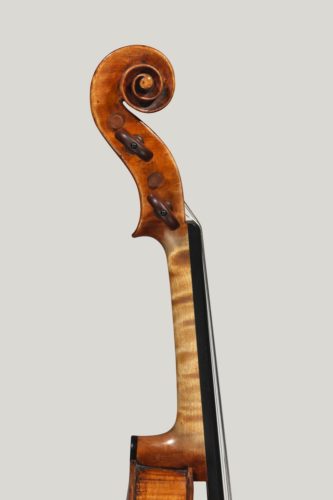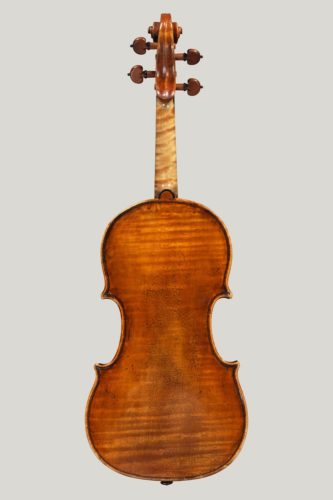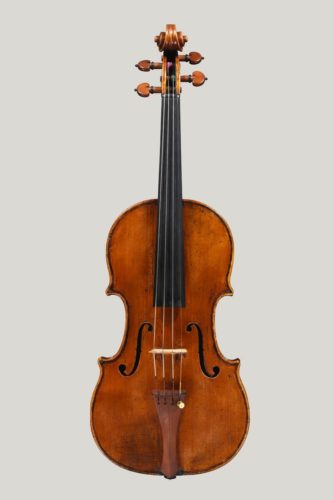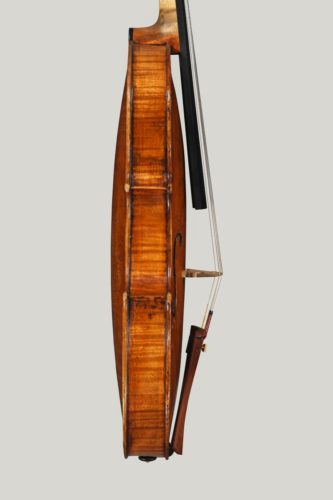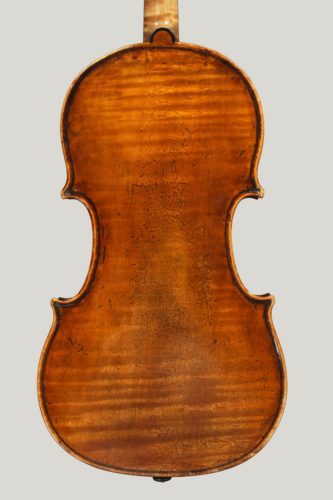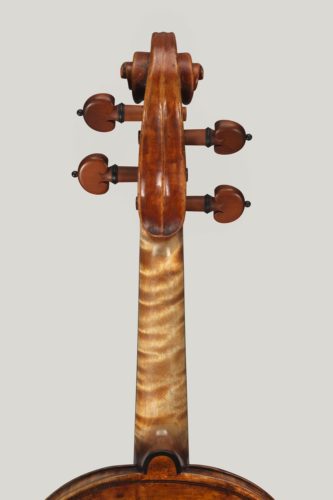Tommaso Balestrieri
Violin made by Tommaso Balestrieri in Mantova in 1759. Liv Hilde Klokk plays on this instrument.
Tommaso Balestrieri worked in Mantua from the middle to the late 18th century.
He claimed on his labels to be Cremonese, but no records of his presence there have so far been found. It is possible that his origins actually lie in one of the small villages between Cremona and Mantua. His style is essentially Mantuan, derived from the work of Camillus Camilli (b. ca.1704, d.1754). At an earlier period, Pietro Guarneri of Cremona was employed by the Mantuan court as a violinist and maker of violins, and although he died in 1720, too early to have had a strong direct influence on Camilli, his style became deeply impressed on the Mantuan school in general.
Early work by Balestrieri shows the deep impress of Camilli, with rounded archings and delicate edgework. He quickly grasped the newer ideas of Stradivari, utilising a flatter arching, and overall working towards a more rugged and purposeful appearance.
The example in the Dextra Musica collection is a fine and characteristic one, with an original label dated 1759. It is fully developed in style, having a broad outline with short, sturdy Stradivari-like corners, and most significantly, a low, strong arching. The edges are well defined, but cut quickly and a little unevenly. The soundholes are also Stradivarian in form, with broad wings cut on a steep angle which is typically Mantuan. The head is particularly distinctive. It is freely cut, with a large eye and an extended final turn. The chamfer is narrow and irregular, but the head itself is quite broad. The way in which the front face of the volute is cut is a useful signifier of Balestrieri’s workmanship. As the central spine between the parallel flutes winds around the head towards the pegbox, it diminishes in height, and the two flutes almost merge into one as they approach the throat.
Balestrieri’s varnish lacks the subtlety of the great Cremonese recipes from earlier in the eighteenth century. While Pietro Guarneri used a glorious red-tinted varnish on his Mantuan work, Camilli used a more modest gold-orange colour of great warmth, and Balestrieri ended his career using a quite dry, thin brown coating. This gradual reduction sums up the general decline in varnish at the end of the classical period of violin making. Balestrieri did however manage some very attractive, more complex and richer coloured effects in his earlier works, and this is a fine example.
He seldom used the highest quality materials, probably for economical reasons, but this violin has a handsome one-piece back with a modest but regular transverse figure; the ribs and scroll appear to be cut from the same timber. The front is made from very good mountain spruce with straight grain of narrow width.
Balestrieri acquired some of the constructional techniques of the Cremonese makers through the connection with Pietro Guarneri, and probably worked from an internal mould. He regularly used the small pins at either end of the front and back, typical of Cremonese work, to locate the plates onto the rib structure. There is sometimes also a small interior point mark on the centre of the back, a significant feature usually restricted to Cremonese makers.
The violin was previously in the collection of Geraldo Modern of Brazil. It has certificates from Charles Beare and Peter Biddulph dated 1990 and 2007 respectively.
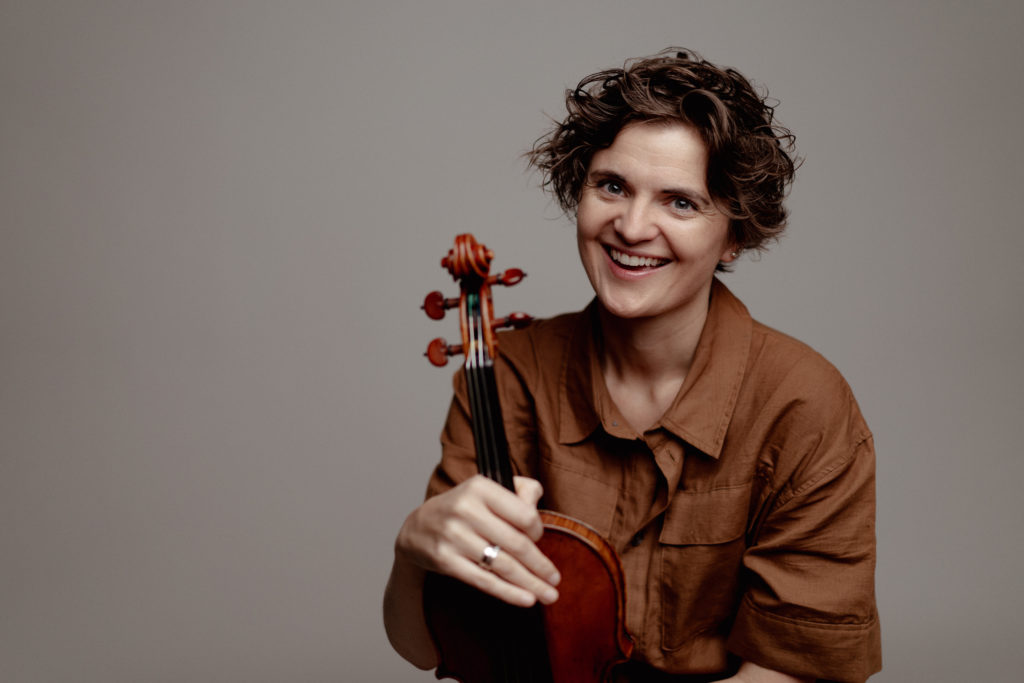
Liv Hilde Klokk
Norwegian violinist Liv Hilde Klokk (b. 1984) is already established as one of Scandinavias finest young musicians. She regularly performs as a soloist in Norway and abroad. She is part of the Oslo String Quartet.
